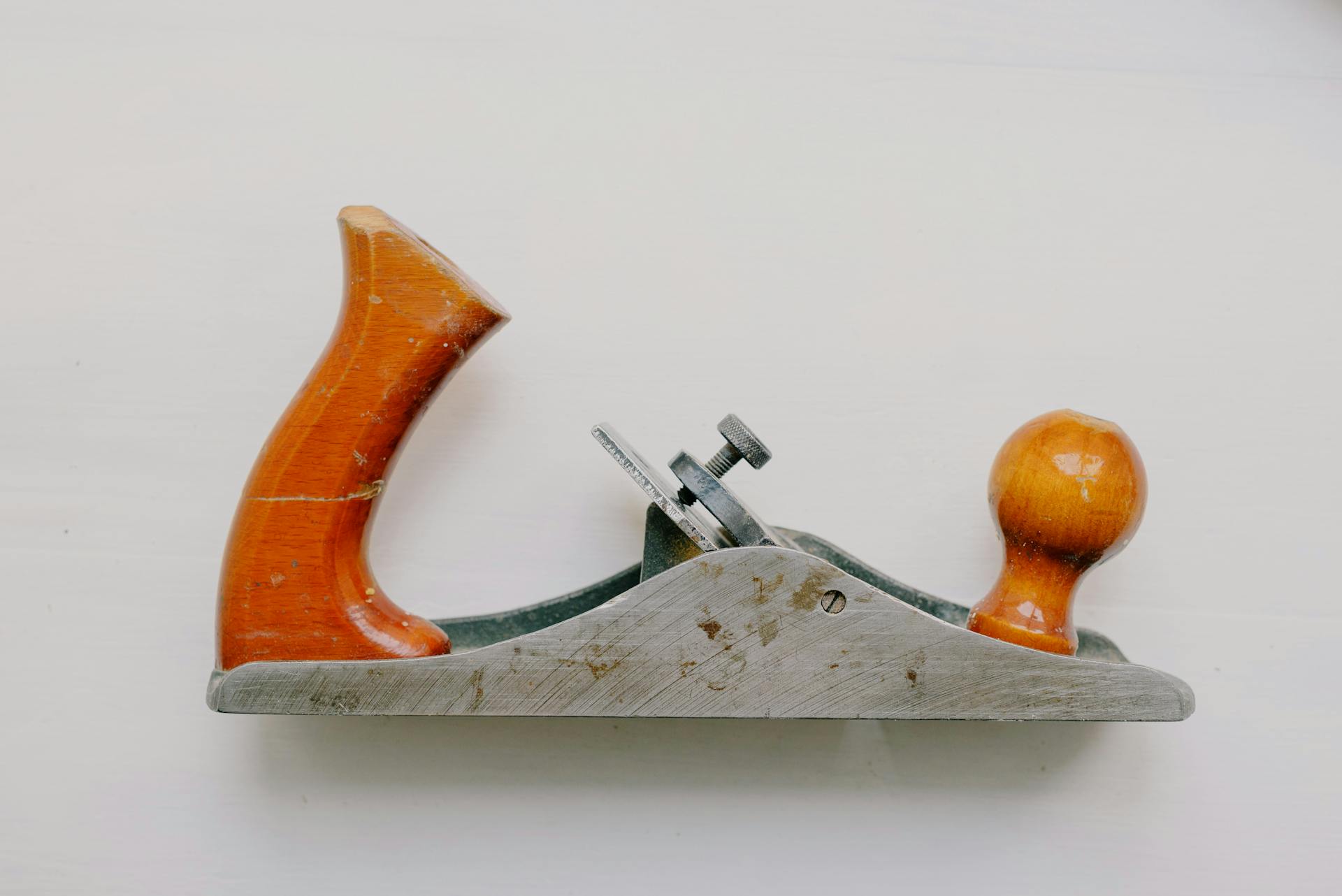
Fifo vs lifo is an important decision for businesses when it comes to inventory valuation. Simply entering inventory data into accounting software does not always account for the best inventory valuation method. The way a business depends on its inventory and its tax situation can help determine which of these two common inventory valuation methods is best suited for them.
FIFO stands for First-In, First Out, which means that the items entered into the system first are usually the ones sold first. In contrast, LIFO stands for Last-In, First-Out, meaning that the most recent items entered into the system are usually sold first. Choosing between these two methods requires careful consideration of a company's specific inventory flow and recordkeeping requirements.
Expand your knowledge: Lifo Reserve Accounting
Unlocking the Secrets of Inventory Valuation Methods
Understanding the different inventory valuation methods is essential, especially when considering whether to use FIFO (First-In, First-Out) or LIFO (Last-In, First-Out). Each method has its own advantages and disadvantages.
The specific identification inventory valuation attaches cost to specific items, such as serial numbers or some other kind of unique identifier. This is usually done for expensive items such as specialized electronic components. The weighted average method takes the average cost of all items purchased in a period and assigns it to all inventory sold during that period; this method is often used for items like raw materials. The retail method values inventory based on its retail price, with a markup percentage added. If inventory is reduced then the retail method will take into account the reduction and adjust accordingly.
Each specific inventory valuation method serves its own purpose. FIFO assumes that the first items entered into the system are sold first and those remaining at the end of an accounting period are assumed to be there from earlier purchases at an older price; any items discarded due to spoilage are valued at their most recent purchase price. On the other hand, LIFO inventory costing assumes that recent items entered into the system are sold first and any remaining inventory left at the end of an accounting period was acquired at the oldest price possible. Whichever method you choose, understanding each one thoroughly is essential when valuing your inventory.
Intriguing read: Fixed vs Variable Cost
Unlock the Power of Your Bottom Line

The bottom line of any business is critically important and understanding the differences between fifo vs lifo inventory valuation methods can have a significant impact on it. FIFO stands for first in, first out and LIFO stands for last in, first out. They both refer to the order in which you sell your entire inventory.
Using the right inventory valuation method can make a significant difference to your business's profitability because dollar amounts and quantities sold can be impacted by which method you use. It is important to understand how each method works and how they will affect your bottom line before making a decision.
Related reading: How to Balance Books for Small Business
Uncovering the Value of Inventory for Tax Needs
For business owners, knowing the difference between fifo and lifo inventory valuation is essential for tax needs. FIFO (First-in, First-out) is the most commonly used inventory valuation method whereby the oldest items are sold first. While LIFO (Last-in, First-out) is a method that assumes the newest items are sold first. Understanding which method provides the greatest tax burden savings can be a challenge.
If your business regularly files Form 970 - Tax Benefits for Education Expenses to switch back to a different inventory valuation method, you will need express permission from the IRS to do so. To request approval of an inventory valuation change, companies must complete Schedule Part 2 of Form 3115. This form explains how you plan to value your current inventory and why you believe it will reduce your overall tax burden.
When deciding which inventory valuation method works best for your business needs, it’s important to remember that switching back or forth requires approval from the IRS and filing Form 3115 in its entirety. Knowing this information ahead of time can help minimize any potential issues with getting approved or choosing the right inventory valuation method for your situation when it comes time file taxes.
Additional reading: The Concept of the Time Value of Money
Discovering Why Inventory Valuation Matters
Inventory Valuation is an important element of any business's inventory management system. It determines the cost of the items held in inventory and how much money the company makes from them. Choosing the right inventory valuation method is essential for a business to maximize its profits and minimize its tax burden.
By selecting either First-in, First-out (FIFO) or Last-in, Last-out (LIFO) as their preferred inventory valuation method, businesses can carefully manage their net profit margins and ensure they are compliant with all applicable tax laws. In this Dock Treece Jennifer Post & Ryan Goodrich contributed article source interviews with experts, we explore why inventory valuation matters and how it impacts a business’s bottom line. Read on to learn more about FIFO vs LIFO and why you should choose the right inventory valuation method for your business.
Suggestion: Tax Accounting in the United States
Comparing FIFO and LIFO - Which is the Optimal Choice?

When it comes to calculating cost and tracking goods sold in a business, FIFO and LIFO are two of the most trusted methods. FIFO stands for First-in First-out, meaning that businesses offload their oldest products first. This method follows the natural flow of inventory meaning that recent inventory costs are typically lower than those of older inventory. When businesses acquire older inventory, this means stated profits are higher since they pay less for it than if they had acquired more expensive recent inventory.
The LIFO method is the opposite ofFIFO in that businesses offload their most recent purchases first. This typically results in higher costs in comparison to FIFO since the costs previously paid for older inventory is not taken into account. This naturally creates a higher profit margin which is reflected on financial statements. However, when a company switches from FIFO to LIFO, books are kept forever based on the price of the older inventory which does not always reflect current market values due to inflation.
In conclusion, understanding both FIFO and LIFO methods can help businesses decide which approach is optimal for their situation when calculating cost and tracking goods sold. While switching from one to another can have an effect on financial statements depending on the company's needs, it is important to consider all factors before deciding which method to use.
If this caught your attention, see: Depreciation Expense Straight Line Method
Frequently Asked Questions
How do you calculate FIFO, and LIFO?
FIFO (First In, First Out) and LIFO (Last In, First Out) are inventory accounting methods used to track the cost of goods sold and determine the value of inventory on hand. They both involve keeping track of when items were purchased so that the oldest item is usually the first one to be sold. To calculate FIFO or LIFO, you need to know the cost of each item purchased and/or sold, as well as when they were bought or sold. Read more about how these accounting methods work to properly manage your inventory and finances.
What is inventory valuation and why is it important?
Inventory valuation is the process of estimating the economic value of a company's inventory. It is important to ensure financial accuracy and provide insight into the cost and profitability of each product or service.
How do you calculate dollar value LIFO?
To calculate dollar value LIFO, you need to determine the cost of current inventory and compare it to that of the prior period. The difference between the two will give you the dollar value LIFO, which is used to measure inventory levels and profitability. Read on to learn more about how to apply this accounting method.
Do most companies use FIFO or LIFO?
Most companies use FIFO (First In, First Out) inventory accounting methods since they are the most straightforward and cost-effective approach. However, some businesses may benefit from using LIFO (Last In, First Out) for their inventory management depending on their specific needs. To learn more about the differences between FIFO and LIFO, read our comprehensive guide.
What is standard cost inventory valuation?
Standard cost inventory valuation is the practice of assigning a predetermined price or cost to an inventory item which is used when valuing that item for financial reporting. It allows businesses to more accurately reflect their actual costs in their financial statements. Read on for more information about this accounting method.
Featured Images: pexels.com


